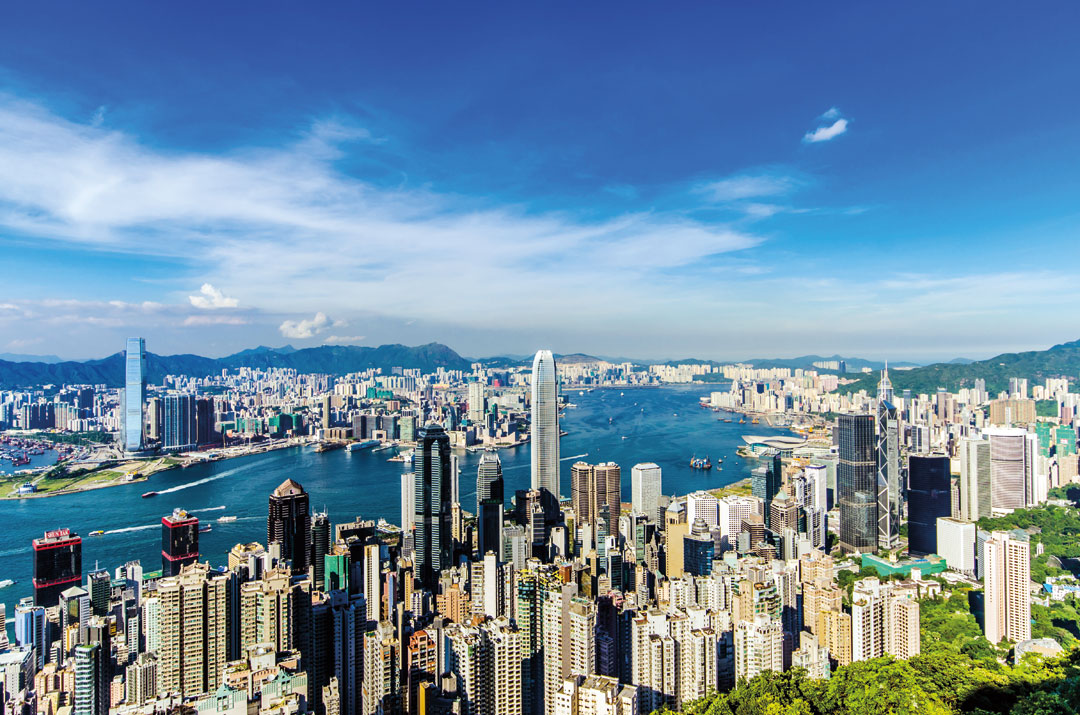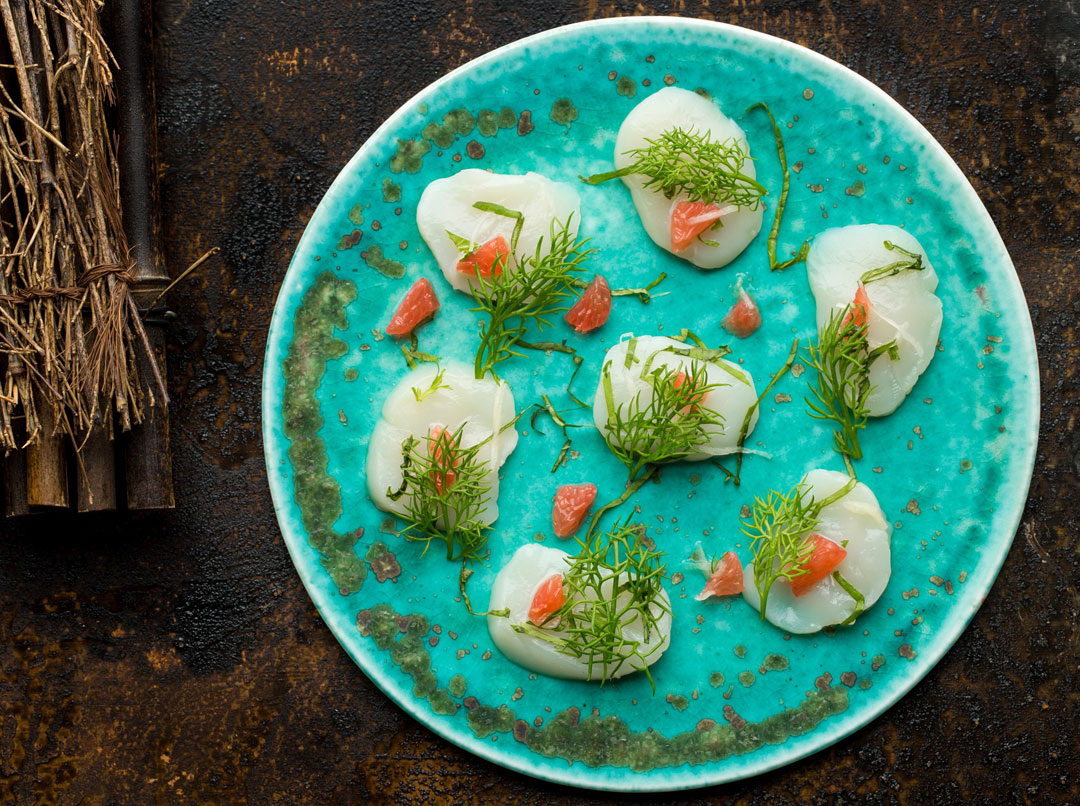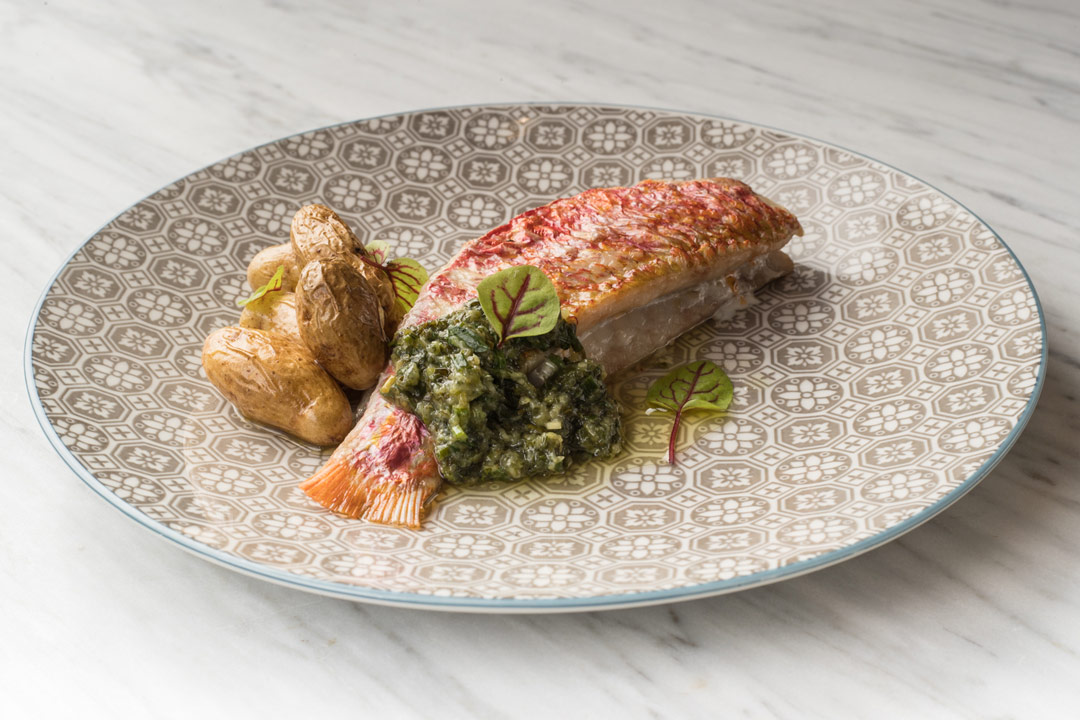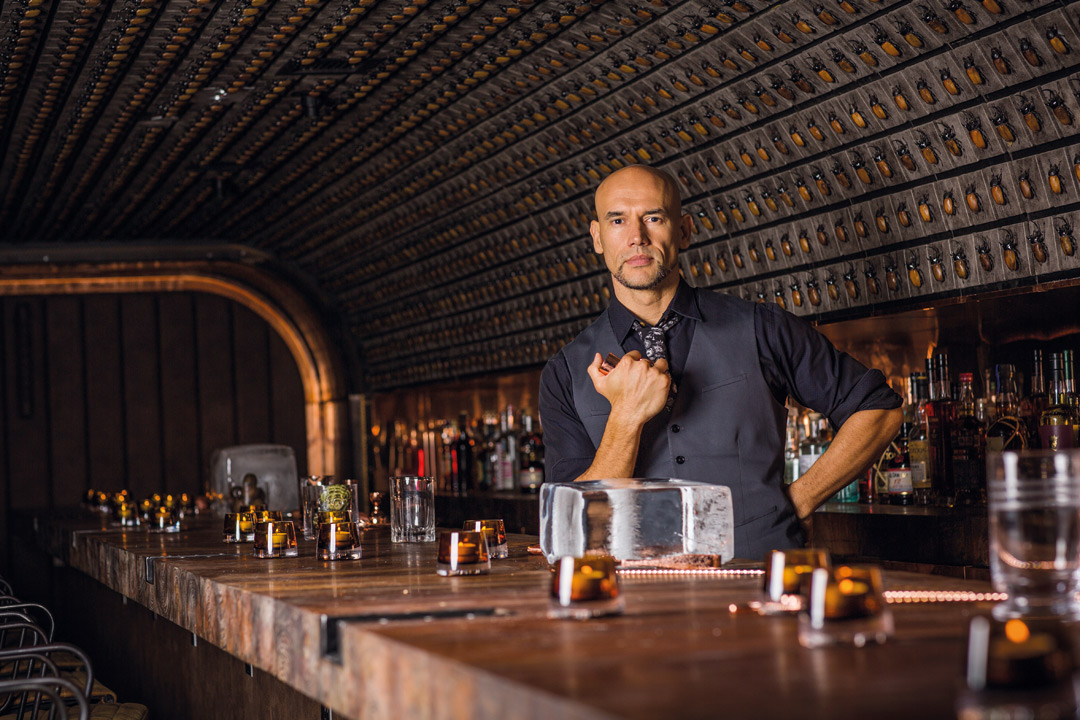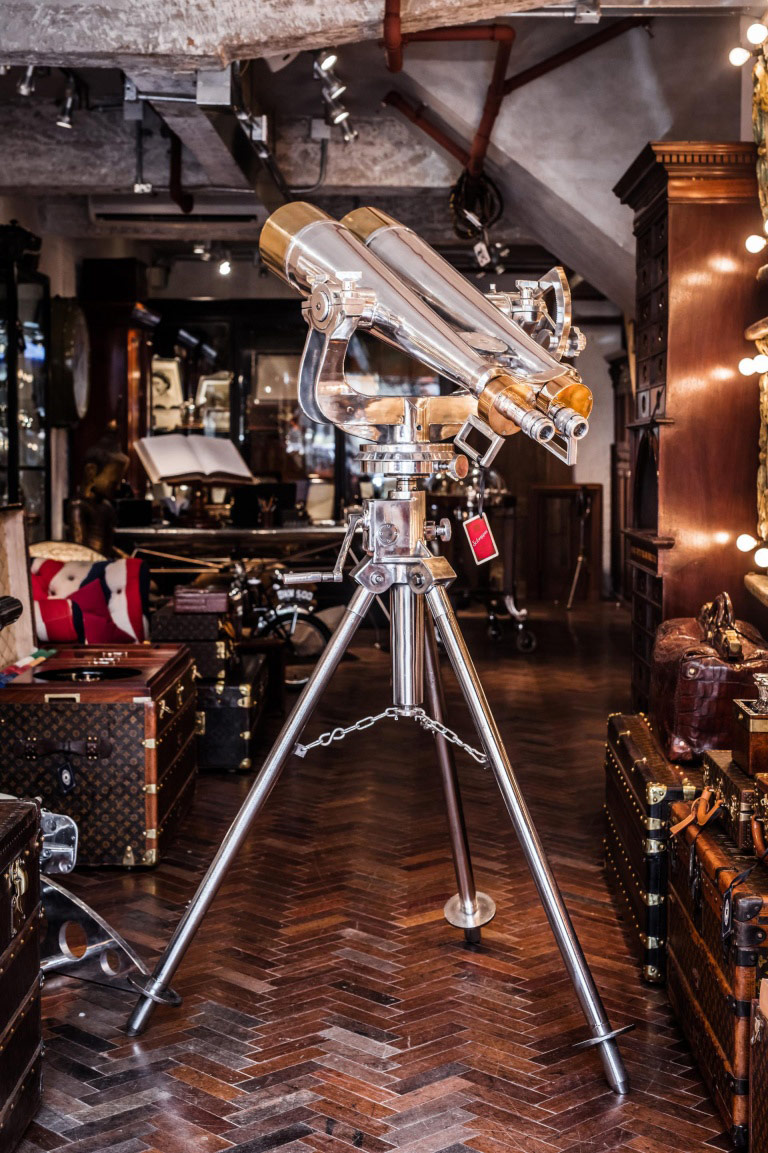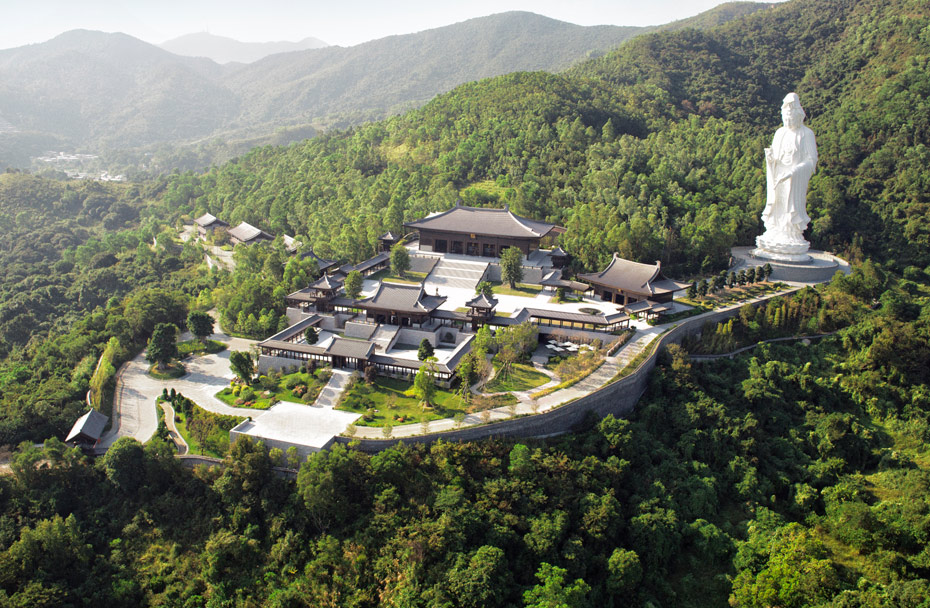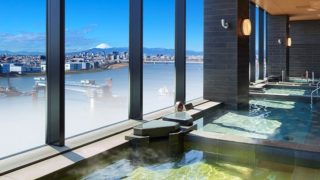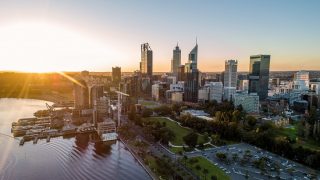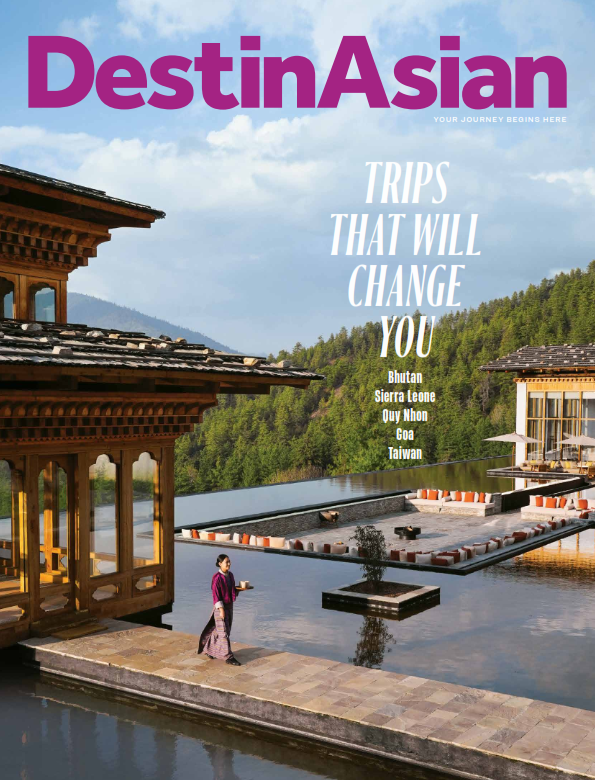Ever-changing Hong Kong always has something new to offer the visitor, as the latest batch of openings attests.
Sleep
Hotel Stage burst onto the scene earlier this year in the eclectic Kowloon precinct of Yau Ma Tei. Small but inviting, its 97 guest rooms and suites are fitted with oversize windows, contemporary furnishings, and deluxe amenities, while Muse— a subterranean space that’s part fine-art bookstore, part gallery, and part chic gastro-wine bar —is the perfect spot to rub shoulders with local creative types. Easy access to the MTR is an added bonus.
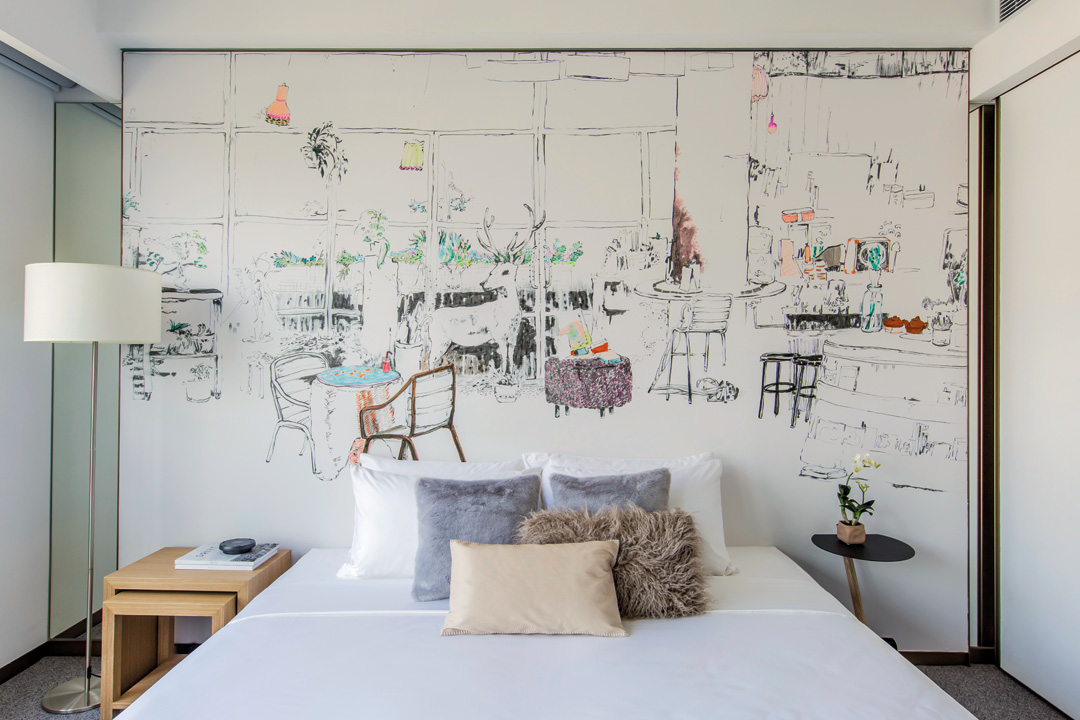
Works by local artists appear throughout Hotel Stage, as with this neighborhood street scene by Kwong Man Chun in a guest room.
Come December, Kowloon will also be home to the 545-room Kerry Hotel, the fourth Hong Kong property by the Shangri-La group. With captivating Victoria Harbour views, some of the most spacious guest quarters in the city, and a host of innovative dining and entertainment venues, this urban resort promises to add a serious dash of vitality to the oft-overlooked Hung Hom area. Take a dip in the 25-meter outdoor pool, graze on Asian favorites at multi-kitchen restaurant Rumsey Rock, or sip nostalgic Hong Kong tipples in Shelter, the hotel’s lobby lounge.
Eat
Chef Nate Green’s innovation and passion for ingredients shine through at his smart new Shek Tong Tsui eatery Rhoda. The former 22 Ships chef has teamed up with restaurateur Yenn Wong and interior designer Joyce Wang to create a space that’s vibrant and sophisticated yet refreshingly welcoming—think brass-lined cocktail bar, exposed ceiling beams, deep-set booths, and a lively open-kitchen concept that puts Green and his team at center stage. Matched by an inspired wine list and some very classy cocktails, the menu is made for sharing and showcases the freshest ingredients Green can get his hands on, from delicate slow-cooked octopus to soy-marinated Mangalica pork belly.
The newest eatery to open in the new-look California Tower at the heart of Lan Kwai Fong, Mercato is the brainchild of Michelin-starred celeb chef Jean-Georges Vongerichten, who has created a soul-soothing menu of comfort dishes, each inspired by seasonality and executed with French precision amid “farm chic” interiors by design firm Neri & Hu. The spot has already drawn praise for its pizzas, which include a decadent four-cheese pie with egg and mushrooms, while signature dishes like crispy beef short rib and char-grilled octopus with garlic and capers promise to please palates and wallets alike.
On Peel Street in SoHo, Cochin Delicatessen combines a modern French bistro with an intimate cocktail bar and a deli specializing in imported cheeses and beautifully aged charcuterie. A creative space for acclaimed chef Renaud Marin to strut his stuff, Cochin has already proven a popular way station for nine-to-fivers climbing the hill to Mid-Levels. For grazers there is silky beef tartare, smoked paprika octopus carpaccio, and moreish rabbit sliders; and for those looking to settle in, great sharing dishes include roasted spring chicken served in the pan, lamb pot-au-feu, and salt-crusted New Zealand snapper, all matched with a French-leaning wine list.
Drink
One of the most beautiful bars to open in the city in years, Ophelia brings a touch of sexy intrigue to The Avenue development in Wan Chai. A partnership between Bangkok-based bar designer Ashley Sutton (of Iron Fairies and Maggie Choo’s fame) and local hospitality giant Dining Concepts, the opulent space is themed around an exotic bird boutique but with touches of a decadent, hidden opium den: there’s a bar bathed in golden light, walls adorned with peacock feathers and shimmering tiles, and a troop of resident performers who cavort inside giant birdcages. Look for tapas dishes by Australian chef Angus Harrison and inspired cocktails such as the Cheongsam, presented in an LED-lit birdcage.
Sutton is also behind the stunning interiors of J.Boroski, an exclusive speakeasy-style cocktail bar hidden below Pottinger Lane in Central. An offshoot of celebrity barman and “mixsultant” Joseph Boroski’s namesake outlet in Bangkok, the months-old venue offers a unique cocktail concierge service: after a consultation with the patron, every drink is lovingly made from scratch, using fresh and infused ingredients and an extensive stock of spirits sourced from the four corners of the globe.
Perched nine stories above Wellington Street in The Loop building, I Know John is another speakeasy-inspired boîte, complete with industrial-chic interiors and a tiny terrace for quick escapes. While this is a great spot to sip classic cocktails, try one of the bar’s well-priced signatures, which include the Caña Sarapan—an unlikely but tasty combination of egg white, marmalade vodka, and horseradish—or the pre-bottled Honey & Butter Limoncello.
Shop
For a touch of Hong Kong’s growing “contemporary” antiques scene, head down to Gough Street in NoHo and through the doors of Rare by Oulton. This two-level store is packed to the rafters with utterly beautiful things, from vintage Louis Vuitton steamer trunks converted into cocktail bars, to mid-century Dunhill Aquarium lighters and WWII-era Japanese military binoculars.
It’s hard to beat PMQ for a one-stop shopping experience: the revamped former Police Married Quarters on Aberdeen Street houses 100-plus studios, stores, and pop-ups by primarily homegrown brands and artisans. Among the newest tenants is Alternative Country, which specializes in durable yet fashionable boots made from premium American leather. The near-indestructible footwear is perfect for stomping your way through the nearest wet market.
Tap into the city’s burgeoning high-end vintage clothing scene with a visit to OnceStyle. Home to an enviable collection of designer womenswear and accessories from the ’80s and ’90s—many of which are in pristine condition, having been sourced from private couture collectors—the tiny Sheung Wan boutique may be more expensive than many of its competitors, but you’re sure to find a genuine bargain or two.
Do
With its origins in Hong Kong’s colonial era, “junking”—boating day trips to the city’s many hidden beaches and coves—remains a popular year-round diversion. NextWave Charters is the newest company on the scene, offering a fleet of luxe yachts including the recently launched NextWave Island, a karaoke-equipped party boat designed with both avid and newbie junkers in mind. The company provides an experienced crew and can also organize catering, water sports, overnight charters, and evening cruises through Asia’s most famous harbor.
Those of a more spiritual persuasion will want to visit the Tsz Shan Monastery, a sprawling Buddhist complex that opened last year amid the green hills of Tai Po in the New Territories. Financed by Hong Kong’s richest man, Li Ka-Shing, the sanctuary is home to landscaped gardens, serene halls of worship, and an iconic 76-meter-high Goddess of Mercy statue, the second-tallest in the world. The monks offer regular spiritual lectures and workshops, but be sure to book online well in advance as the number of daily visitors is limited to 400.
Inside Track
Harsh Roopchand, restaurateur and owner of Amalfitana and Rummin’Tings
Food-wise, I think one of the most overlooked aspects of Hong Kong is its dwindling number of dai pai dongs, or outdoor food stalls. Second-generation Sing Heung Yuen on Mee Lun Street is Central’s most renowned, serving a famed macaroni-and-tomato soup with beef and fried egg. Another hidden gem is Chautari’s Restaurant, arguably one of Hong Kong’s best Indian joints. The Chautari brothers make some of the meanest butter chicken, lamb vindaloo, and garlic naan in town.
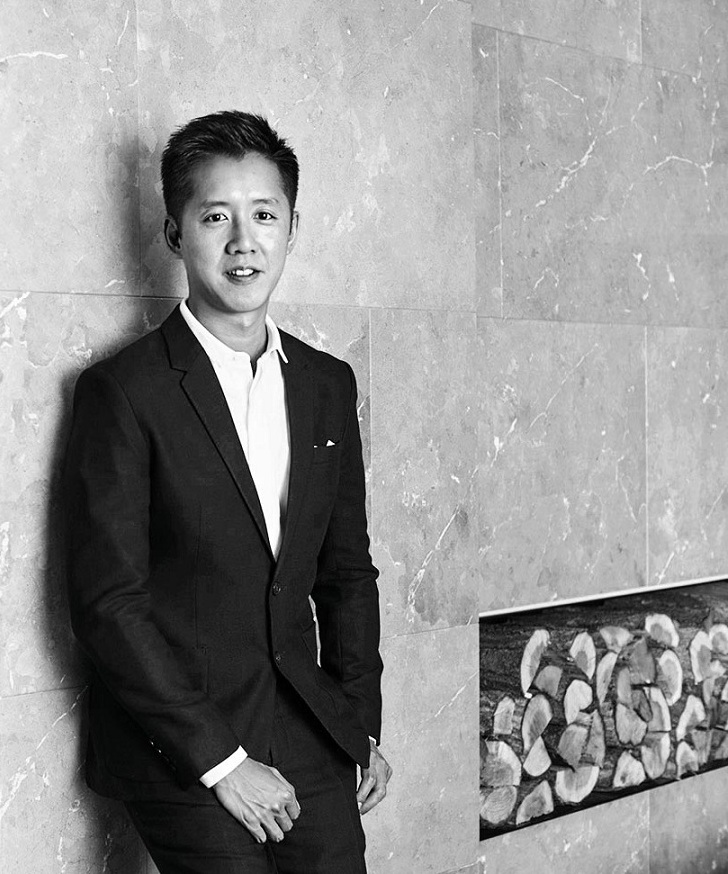
Read our travel journal with André Fu here.
André Fu, interior architect and founder of design studio AFSO
One of the city’s best-kept secrets is Organic Modernism, a furniture shop nestled in Ap Lei Chau’s Horizon Plaza that offers a broad range of Nordic-inspired, solid-timber chairs with a twist. On the dining front, my favorite newcomer is Potato Head, the brainchild of Yenn Wong and Ronald Akili of Indonesia’s PTT Family. The sensibility is contemporary Asian, with communal teakwood tables, Torajan panels, and an intriguing metal framework by Japanese architect Sou Fugimoto.
This article originally appeared in the October/November print issue of DestinAsian magazine (“City Guides: Hong Kong”).

